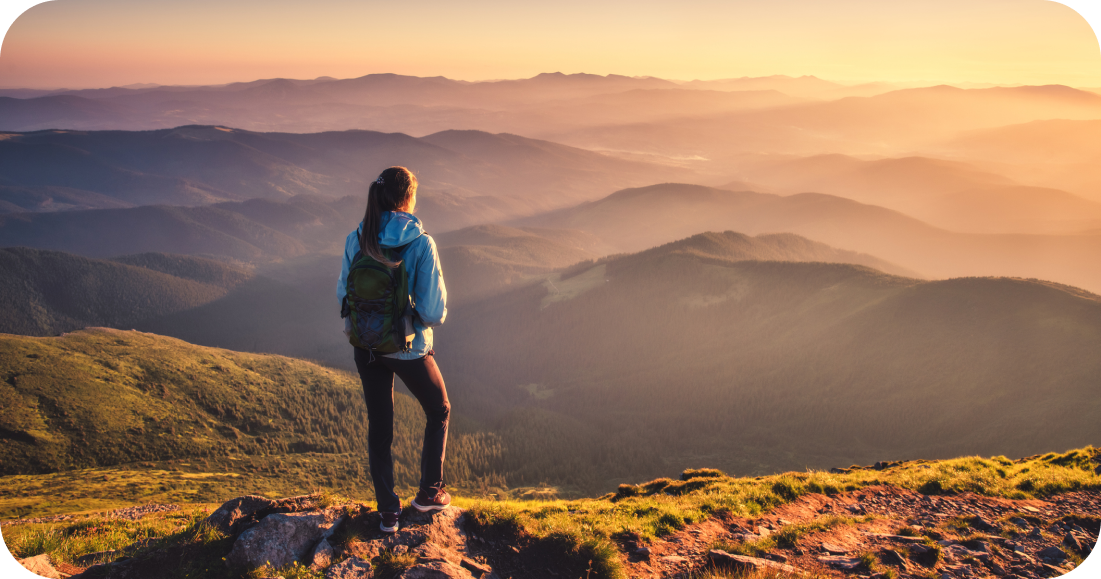I’m a full-time working parent who often feels as though I’m running low on both time and energy. It’s hard to slow down and just be, let alone meditate.
But that’s exactly why I started a regular meditation practice. It sustains me and has changed my relationship with myself and those around me — especially during times of stress.
That’s probably because meditation cultivates mindfulness, the act of bringing your attention to the present moment without judgment. Research shows this self-awareness helps us learn how to process and manage difficult emotions, improve our moods, and decrease stress.
If you’re curious about meditation but are worried you don’t have the time to devote to it, I get it. As a behavioral coach and mindfulness facilitator, my clients often share their struggles of starting or sticking to a regular practice. But here’s the thing: You don’t have to meditate to reap the benefits of mindfulness.
Simple ways to be more mindful
If you don’t have time for a regular meditation practice or are working toward developing one, here are a few easy ways to incorporate more mindfulness into your day.
Take mindful walks
Turn a walk you often take (it could be to the kitchen or somewhere outside) into a mindful walk. Each time you set off, bring a gentle attention to your body. Ask yourself, “How do I know that I’m walking?” This will help you focus on your bodily movements and sensations.
From here, bring awareness to all the different aspects of walking. Notice the sensation of your feet on the ground and the movement of the muscles in your legs. Notice any changes in the terrain, like the firmness of the ground. Notice what your feet, legs, arms, etc. are doing as you walk. Notice any shifts in your breathing, body temperature, or pulse.
You get the idea. Just experience your body on a walk. That’s it. The goal is just awareness.

Achieve your mental wellness goals
AbleTo programs give you 24/7 access to tools, activities, and content tailored to your needs. Sign up or log in to start exploring.

Do a body scan
Take a moment to take stock of how your body feels. If it’s helpful, you can start by drawing your attention to your head. How does your scalp feel? Is your forehead scrunched? And then slowly move, body part by body part, down to the tip of your toes.
Again, the goal is just to notice what you feel, without judgment. It’s not your job to change anything.
Eat mindfully
The next time you’re eating a snack or an entire meal, put away any distractions and focus on your food. What does it look like? Take in any bright or bland colors. Next, smell it. Does the aroma stir up any memories? What do you hear when cutting or chewing your food? Does it smush, crunch, or pop? What subtle or overt flavors can you detect? How do the different textures feel in your mouth? Slow down and engage all your senses. Stop when you’re full.
Get in some green
Go outside and be in nature. No need to move about. Just dial into your five senses and see what you notice. How does the air smell? Can you hear birds chirping? What flowers can you see? How does the grass feel? Take it all in.
Practice gratitude
Try to find one thing you’re grateful for each day. This will train your brain to pay attention to things that bring you joy, which can counter the brain’s tendency to look for danger. Better yet, add that one thing to your AbleTo Freewrite Journal. That way, when you’re feeling low, you can revisit the things that lift you up.
Gather your thoughts
This one can be tricky, but try to catch your thoughts. If it’s helpful, imagine yourself catching them in a net. What are they about? How did they make you feel?
Rather than trying to change these thoughts or ruminating on them, which can make you feel worse, just accept that they’re there. We all experience lots of different thoughts and feelings throughout the day. They’re all valid. And they’re all temporary. Notice them as you’d notice something totally mundane, like a squirrel climbing up a tree, and then move on.
Ground yourself
To anchor yourself to the present moment, place your feet on the floor (feel free to sit or stand) and focus on your breath. Don’t worry about doing any particular kind of breathing exercise. Just follow the natural rhythm of your breathing. Notice how the air feels going in and out of your body. Sit with these feelings for however long feels good. It might be 30 seconds. It might be 5 minutes.
Every moment is a new beginning
By using mindfulness to cultivate compassionate attention to my thoughts, feelings, and actions, I’m a more peaceful and balanced person. That being said, it doesn’t look perfect and it’s something that I have to relearn on a regular basis. But that’s why it’s called a practice. Each moment of mindfulness offers us the opportunity to begin again.
Wherever you are in your journey, I wish you the best as you tend to your mind, body, and spirit. Remember to start small, using your AbleTo tools and support system to help you along the way.
Need help putting these tips into practice?
You may be eligible for virtual therapy, coaching, or on-demand self care from AbleTo. Each program is designed by clinicians and grounded in science. Sign up today and get the support you deserve.
By Lea Wilkinson
Lea Wilkinson is a behavioral coach and meditation teacher. She supports clients by helping them bring meaning to their lives. She enjoys spending time outdoors, being with loved ones, and her daily meditation practice.
Clinically reviewed by Sarah Dolling, LPC, Clinical Content Producer at AbleTo.
Photo by Jamie Brown/Unsplash. Individuals in photographs do not represent AbleTo participants.
The information featured on this site is general in nature. The site provides health information designed to complement your personal health management. It does not provide medical advice or health services and is not meant to replace professional advice or imply coverage of specific clinical services or products. The inclusion of links to other websites does not imply any endorsement of the material on such websites.


